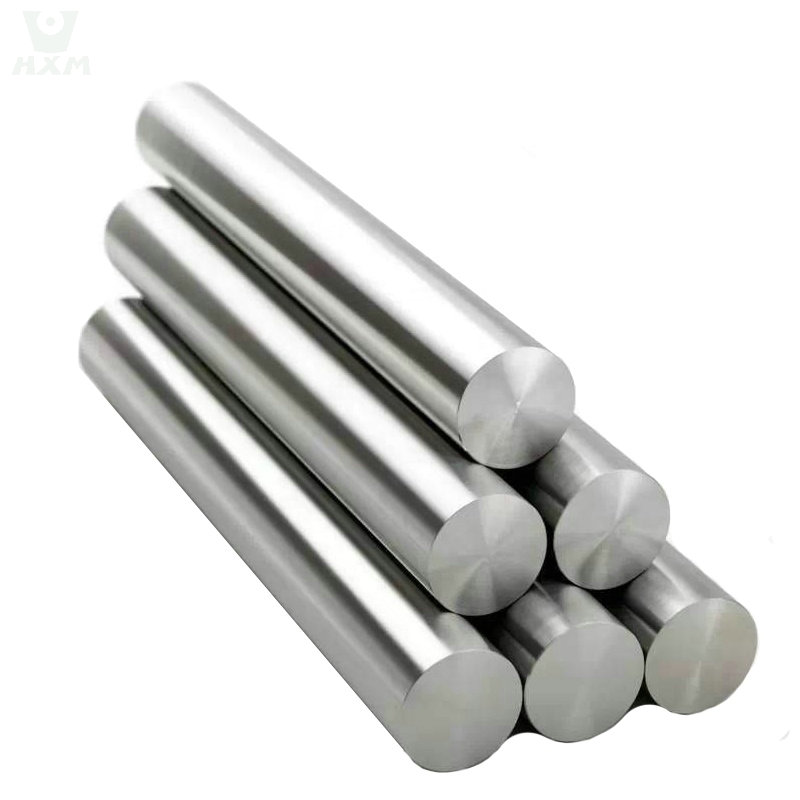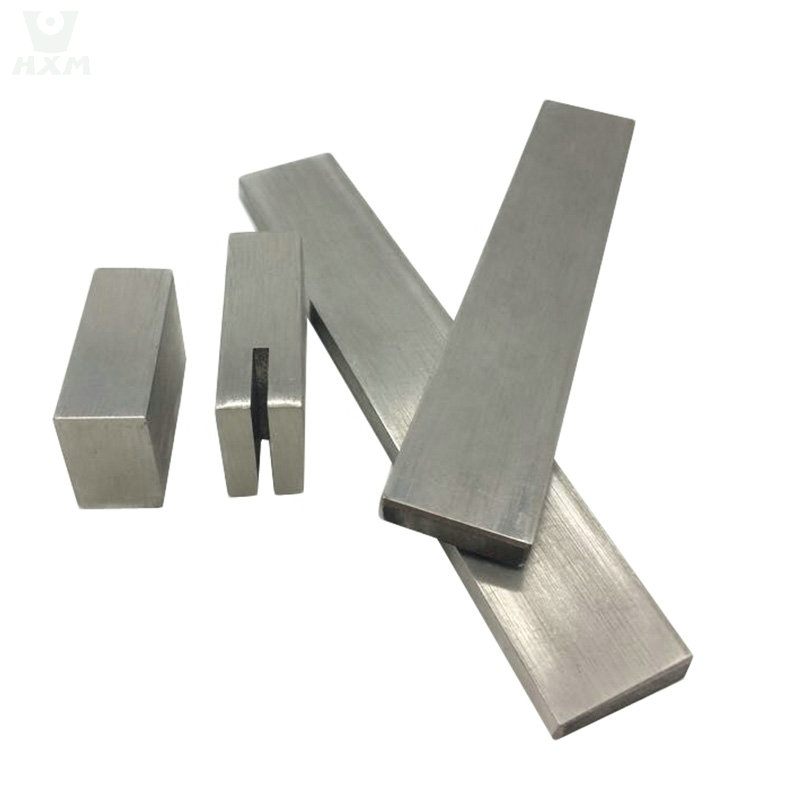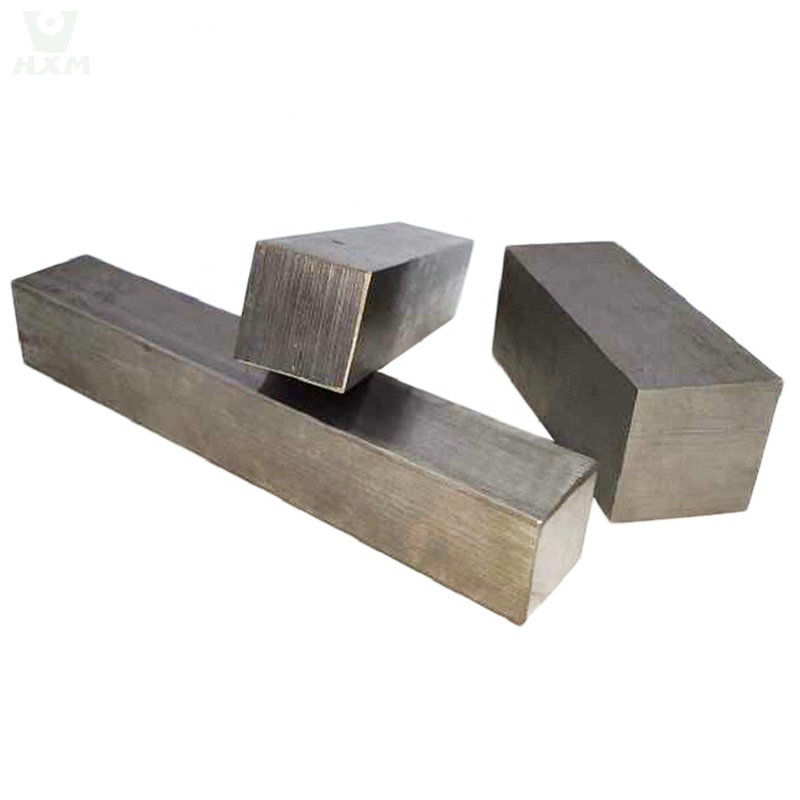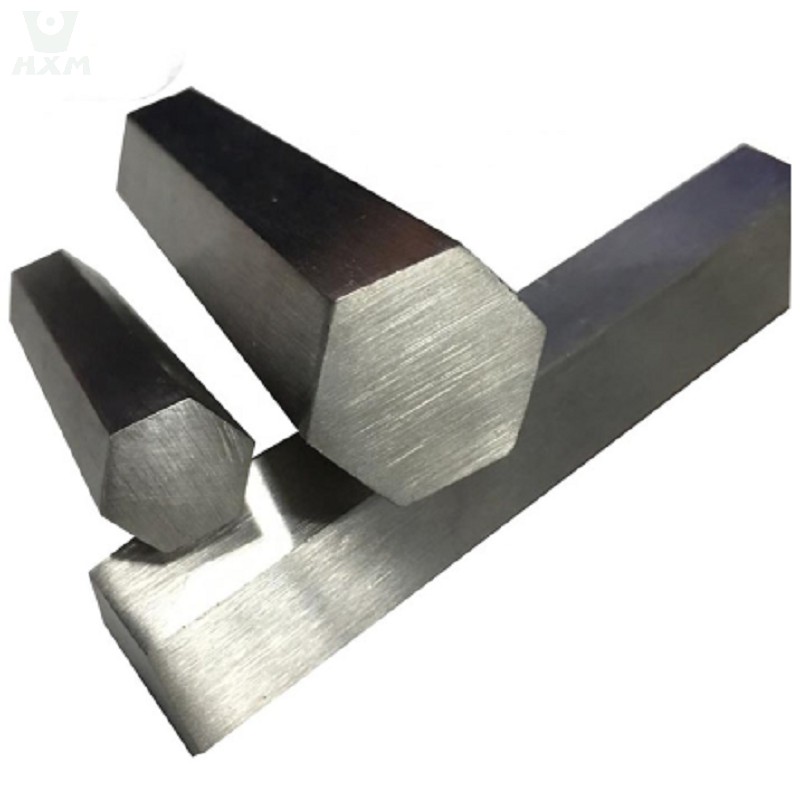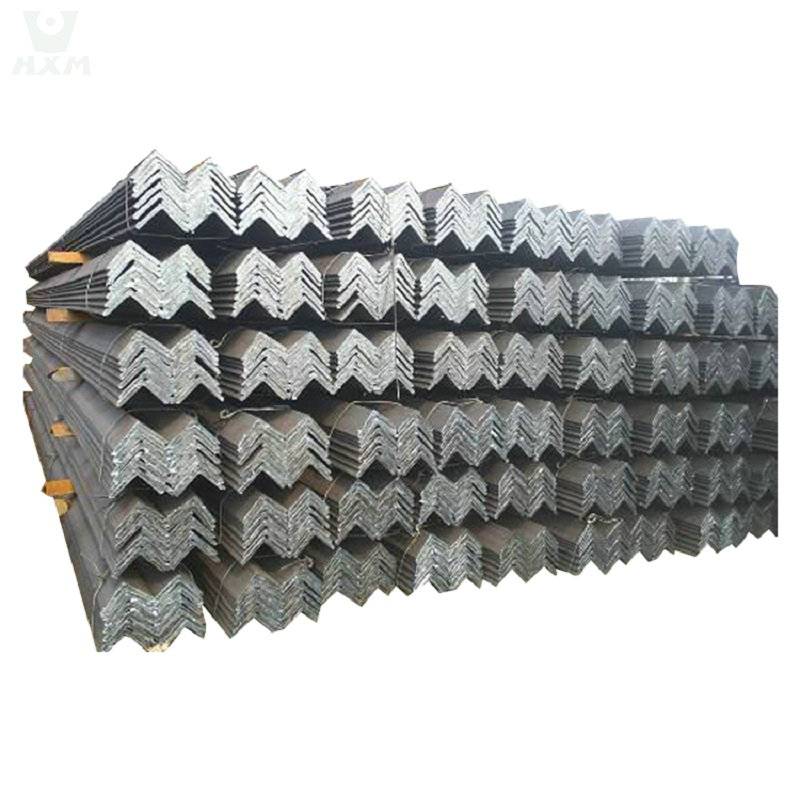Stainless Steel Bar Supplier
As a prominent stainless steel bar supplier based in China, Huaxiao delivers a comprehensive range of stainless steel bars tailored to meet the exacting requirements of diverse industries. Our stainless steel bars are known for their outstanding corrosion resistance, making them ideal for applications demanding superior strength, high-temperature tolerance, pressure resistance, radiation protection, and even low-temperature performance. To cater to various industrial needs, we produce stainless steel rods in different shapes, including square, round, and hexagonal, providing versatile solutions for a wide spectrum of applications.
Stainless steel bars, which are crafted from stainless steel materials containing chromium, come in various shapes such as flat, half-round, hexagon, round, and square. These bars are available in a range of grades, including 15-5, 17-4, 303, 304, 316, 410, and 416. To ensure our stainless steel bars perfectly suit specific applications, they can be customized through processes like sawing, punching, drilling, milling, welding, and bending.
Hot-rolled stainless steel flat bars, with their substantial thickness and high strength, are particularly well-suited for structural applications where exceptional strength, toughness, and corrosion resistance are prerequisites. These bars maintain excellent weight-bearing properties, demonstrate high corrosion resistance, deliver remarkable durability, offer a high strength-to-weight ratio, exhibit fair resistance to thermal and electrical conductivity, and more.
Shape Classification of Stainless Steel Bar
Stainless steel round bar is a cylindrical stainless steel product, widely used in auto parts, aviation, aerospace hardware tools, chemical industries and other industries.
Stainless steel flat steel is a rectangular steel with slightly pure edges. Stainless steel flat steel can be semi-finished steel. There are cold drawn polished stainless steel flat steel and hot-rolled acid white sandblasted stainless steel flat steel.
Stainless steel square bar is a kind of steel material with good corrosion resistance, heat resistance, low temperature strength and mechanical properties.
Stainless hexagonal bar are solid long strips of stainless steel with a hexagonal cross-section. Due to the characteristics of stainless steel hexagonal rods, they are widely used in marine, chemical, construction and other fields.
Stainless steel channel bar is a long steel with a groove-shaped cross section. Ordinary channel steel is mainly used in building structures, vehicle manufacturing and other industrial structures, and is often used in conjunction with I-beams.
Stainless steel angle bar can be composed of various stress-bearing components according to the different needs of the structure, and can also be used as a connection between components. It is widely used in various building structures and engineering structures.
Specification of Stainless Steel Bar
Item | Stainless Steel Bar(Bar ss, Bar stainless, Stainless bar, Stainless Steel Rod) |
Standard | ASTMA276, ASTMA484/A484M, DIN17440, JlS64304, GB1220—92, etc. |
Material | 201 stainless steel round bar, 304l stainless steel round bar, 409 stainless steel bar, cold rolled stainless steel bar, austenitic stainless steel bar, duplex 2205 round bar, etc. |
Shape | The shape of Stainless Steel Bar: |
ss bar sizes | 2mm stainless steel bar, 10mm stainless steel bar, 12mm ss bar, 20mm bar stainless, 50mm stainless bar |
Manufacturer: | Tisco steel, Posco steel, Ttss, Bao steel, etc |
chemical composition of stainless steel bar
| Grade | Cr | Ni | C | Si | Mn | Others |
|---|---|---|---|---|---|---|
| 304 Stainless | 18-20% | 8-10.5% | <0.08% | <1.0% | <2.0% | – |
| 316 Stainless | 16-18% | 10-14% | <0.08% | <1.0% | <2.0% | 2.00-3.00% |
| 410 Stainless | 11.5-13.5% | – | <0.15% | <1.0% | <1.0% | – |
| 430 Stainless | 16-18% | – | <0.12% | <1.0% | <1.0% | – |
| 303 Stainless | 17-19% | 8-10% | <0.15% | <1.0% | <2.0% | – |
| 17-4 PH | 15-17.5% | 3-5% | – | – | – | <0.07% |
physical property of stainless steel bar
| Grade | Density (g/cm³) | Melting Point (°C) | Thermal Conductivity (W/m·K) | Specific Heat Capacity (J/g·K) | Electrical Resistivity (μΩ·cm) |
|---|---|---|---|---|---|
| 304 Stainless | 7.93 | 1400-1450 | 16.3 | 0.5 | 72.0 |
| 316 Stainless | 7.98 | 1370-1400 | 16.3 | 0.5 | 74.0 |
| 410 Stainless | 7.75 | 1480-1530 | 24.9 | 0.46 | 56.0 |
| 430 Stainless | 7.7 | 1425-1510 | 24.2 | 0.46 | 60.0 |
| 303 Stainless | 7.98 | 1400-1450 | 16.3 | 0.5 | 72.0 |
| 17-4 PH | 7.8 | 1380-1420 | 14.0 | 0.43 | 130.0 |
mechanical property of stainless steel bar
| Grade | Tensile Strength (MPa) | Yield Strength (MPa) | Elongation (%) | Hardness (Brinell, HB) |
|---|---|---|---|---|
| 304 Stainless | 515-730 | 205 | 40 | 201 |
| 316 Stainless | 515-755 | 205 | 40 | 217 |
| 410 Stainless | 480-650 | 275 | 20 | 156 |
| 430 Stainless | 450-600 | 205 | 22 | 183 |
| 303 Stainless | 620-1275 | 310 | 30 | 262 |
| 17-4 PH | 1035 | 860 | 14 | 363 |
production process of Haxiao Stainless Steel Bar
- Step One: Raw Material Sourcing The first step in the production of stainless steel bars is the meticulous sourcing of raw materials. These materials include iron ore, chromium, silicon, nickel, molybdenum, and titanium. The quality and composition of these raw materials significantly impact the final product's characteristics and performance.
- Step Two: Melting Process Once the raw materials have been assembled, they are subjected to the intense heat of a giant electric furnace. This melting process typically lasts for a period of 8 to 12 hours, during which the materials are carefully heated to their molten state. This stage is critical in achieving the desired chemical composition and quality of the stainless steel.
- Step Three: Casting Following the melting process, the molten steel is cast into semi-finished forms. This casting stage helps shape the stainless steel into initial shapes that will undergo further processing to create the desired final products.
- Step Four: Forming and Shaping The semi-finished stainless steel undergoes forming and shaping processes. Various techniques, including hot rolling, cold rolling, extrusion, or forging, are applied to shape the stainless steel into its desired form. These methods are essential for achieving the specific dimensions and properties required for different applications.
- Step Five: Heat Treatment Process Heat treatment is a crucial step in enhancing the stainless steel's strength, durability, and certain properties. This process involves subjecting the formed stainless steel to carefully controlled heating and cooling cycles. It can be tailored to improve characteristics such as corrosion resistance, magnetic properties, and mechanical strength.
- Step Six: Cold Drawing Process Bright bars are produced from black bars, which are the initial raw products obtained after melting the raw materials. The cold drawing process is employed to refine the stainless steel bars further. In this step, the bars are cooled at room temperature while being drawn through a series of dies to achieve the desired size, shape, and surface finish.
- Step Seven: Fine-Finishing Processes To meet stringent quality standards, the stainless steel bars undergo additional fine-finishing processes. These may include annealing, turning, grinding, polishing, and other precision techniques to achieve the required surface finish and dimensional accuracy.
These sequential steps collectively form the production process for stainless steel bars, resulting in products that are characterized by their strength, durability, and versatility. These bars find application in various industries and play a crucial role in meeting the diverse needs of different sectors.
Features of Haxiao Stainless Steel Bar
The characteristic of “Material Durability” in stainless steel bars is their exceptional resistance to corrosion and mechanical stress, ensuring a prolonged lifespan. Thanks to their unique composition, including chromium and other alloying elements, they form a protective oxide layer that shields against corrosion, making them resilient even in harsh environments. These bars maintain their strength, toughness, and structural integrity across a wide temperature range, requiring minimal maintenance and offering a long service life. This outstanding material durability makes stainless steel bars a reliable choice for various industries where longevity and reliability are essential.
The “Corrosion Resistance” feature of stainless steel bars is one of their most prominent attributes. These bars are highly resistant to rust and corrosion, even in challenging environmental conditions. The presence of chromium in their composition forms a protective oxide layer on the surface, which acts as a shield against corrosion. This property makes stainless steel bars suitable for applications where exposure to moisture, chemicals, or other corrosive elements is a concern. Their ability to maintain their structural integrity and appearance over time, despite corrosive factors, contributes to their widespread use in various industries.
The “Strength and Toughness” feature of stainless steel bars highlights their exceptional mechanical properties. Stainless steel bars are renowned for their high strength and toughness, making them suitable for demanding applications that require durability and resilience. They can withstand substantial loads and resist deformation, ensuring structural integrity and reliability. Whether in construction, automotive, or manufacturing, stainless steel bars provide the necessary strength and toughness to meet rigorous performance requirements, contributing to their widespread use across diverse industries.
Toggle ConteThe “Low Maintenance” characteristic of stainless steel bars underscores their minimal upkeep requirements. Stainless steel bars are known for their resistance to corrosion, rust, and staining, which significantly reduces the need for maintenance. They remain in excellent condition even when exposed to harsh environmental conditions, ensuring long-term performance without frequent cleaning or protective treatments. This low maintenance quality makes stainless steel bars a cost-effective and hassle-free choice for various applications, where durability and ease of care are essential considerations.nt
The “Temperature Stability” characteristic of stainless steel bars highlights their ability to maintain structural integrity and mechanical properties across a wide range of temperatures. Stainless steel bars exhibit remarkable temperature stability, allowing them to perform reliably in both extreme hot and cold environments. They retain their strength, corrosion resistance, and other essential properties at high temperatures, making them suitable for applications in furnaces, exhaust systems, and boiler components. Conversely, they also maintain their toughness and durability in low-temperature settings, ensuring consistent performance across diverse temperature conditions. This temperature stability is a key advantage of stainless steel bars in various industries and applications.
The “Long Service Life” characteristic of stainless steel bars underscores their exceptional durability and extended lifespan. Stainless steel bars are renowned for their ability to withstand wear, corrosion, and environmental factors over an extended period. This longevity makes them a cost-effective choice, as they require minimal replacement or maintenance. Whether used in architectural structures, automotive components, or industrial machinery, stainless steel bars consistently deliver reliable performance throughout their service life. This attribute not only reduces operational costs but also contributes to sustainable and long-lasting solutions across a wide range of applications.
application of Haxiao Stainless Steel Bar
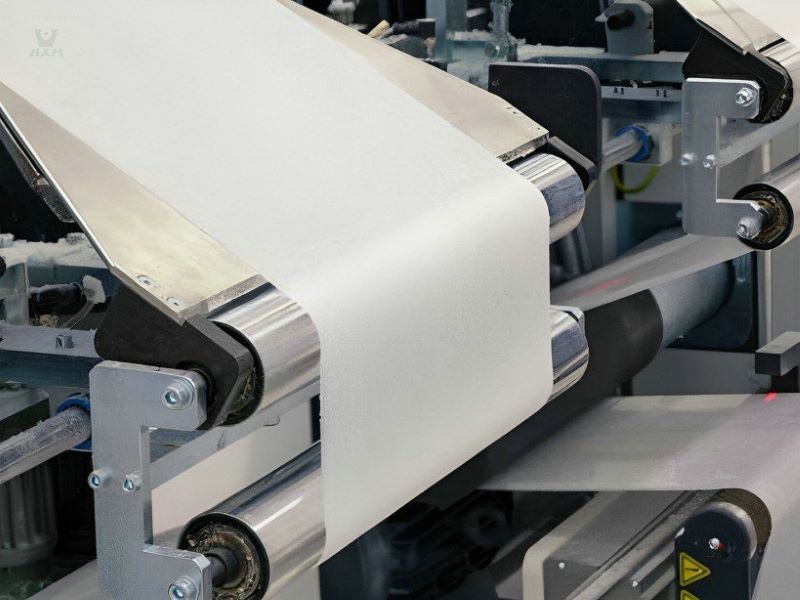
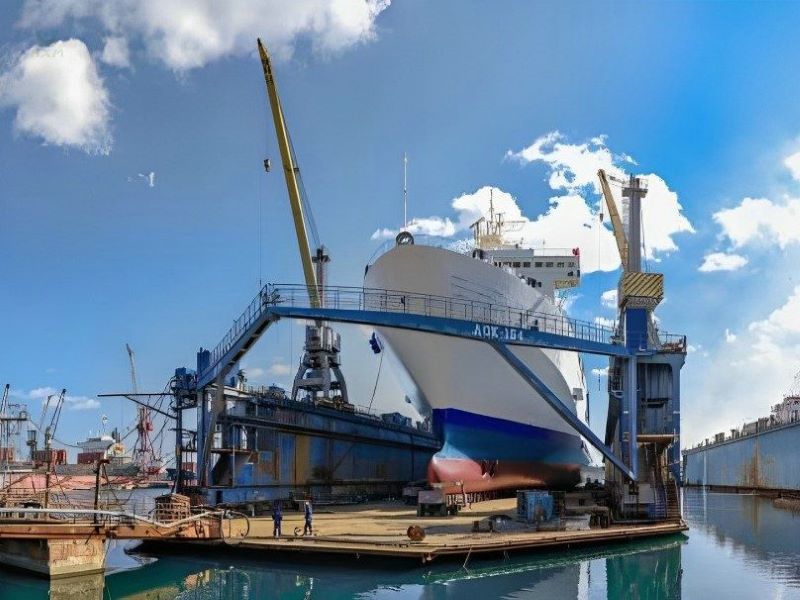
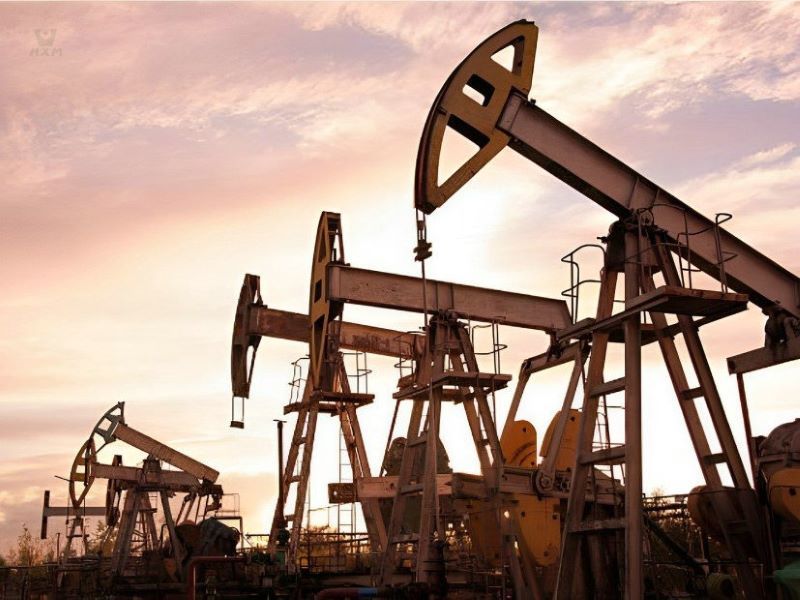
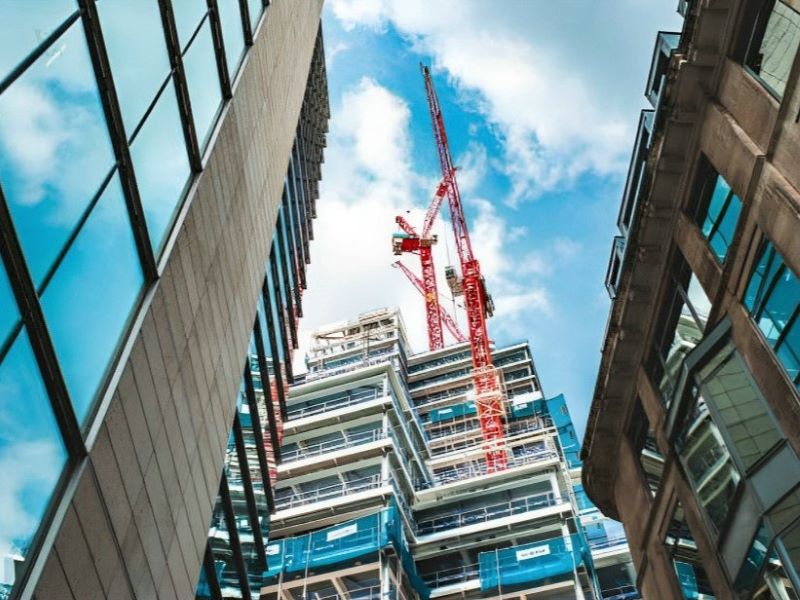
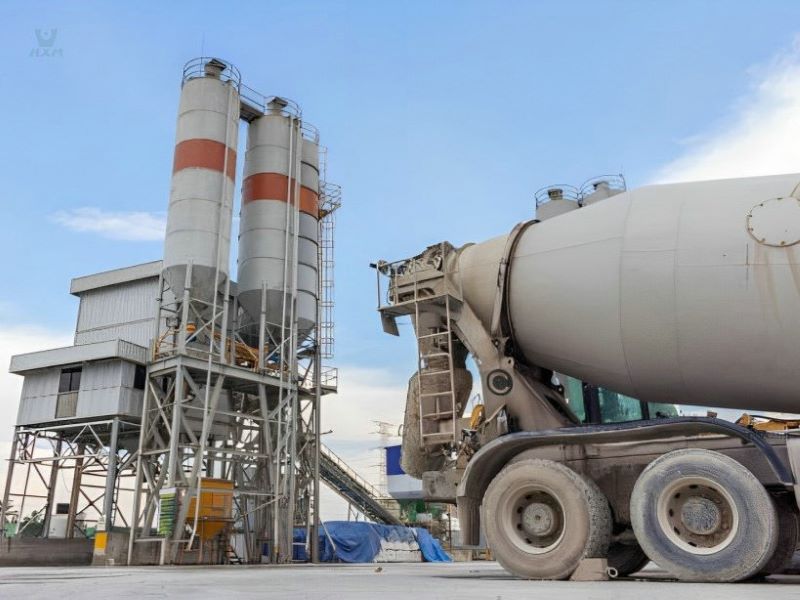
Shipbuilding & Automotive
Stainless steel bars play a vital role in both the shipbuilding and automotive industries. In shipbuilding, their exceptional strength and corrosion resistance make them indispensable for crafting durable and seaworthy vessels. Stainless steel bars ensure the structural integrity of ships even in harsh marine environments. In the automotive sector, these bars are crucial for various components, particularly in exhaust systems. Their high-temperature resistance ensures efficient exhaust emissions, contributing to better vehicle performance. Whether for ships navigating the seas or cars on the road, stainless steel bars are fundamental materials, ensuring longevity, durability, and safety in these critical industries.
Paper and Pulp
In the paper and pulp industry, stainless steel bars find versatile applications. They are employed in various equipment critical to paper production and pulp processing. Stainless steel bars, known for their corrosion resistance, ensure longevity and reliability in these demanding environments. From the pulping process to the final papermaking stages, these bars are used in components such as rollers, shafts, and structural elements. Their resistance to wear, chemicals, and high temperatures makes them ideal for handling pulp, paper, and related materials. Stainless steel bars contribute significantly to the efficiency and durability of machinery in the paper and pulp sector, ensuring the smooth production of quality paper products.
Cement
In the cement industry, stainless steel bars play a crucial role due to their exceptional durability and resistance to harsh conditions. They are extensively used in various mechanical applications, where strength and corrosion resistance are paramount. Stainless steel bars are utilized in manufacturing components like hoppers, conveyors, and mixing equipment, which handle abrasive materials and endure high levels of wear and tear. Their resistance to corrosion and high-temperature environments makes them a preferred choice in cement plants. These bars contribute to the longevity and reliability of machinery, ensuring the efficient production of cement and minimizing downtime for maintenance.
Construction
In the cement industry, stainless steel bars play a crucial role due to their exceptional durability and resistance to harsh conditions. They are extensively used in various mechanical applications, where strength and corrosion resistance are paramount. Stainless steel bars are utilized in manufacturing components like hoppers, conveyors, and mixing equipment, which handle abrasive materials and endure high levels of wear and tear. Their resistance to corrosion and high-temperature environments makes them a preferred choice in cement plants. These bars contribute to the longevity and reliability of machinery, ensuring the efficient production of cement and minimizing downtime for maintenance.
Oil and Gas
Stainless steel bars play a critical role in the oil and gas industry, particularly in environments prone to corrosion. These bars are utilized for various applications, from drilling equipment to pipelines and offshore platforms. Their exceptional corrosion resistance properties, even in aggressive and corrosive conditions, make them essential in maintaining the integrity and safety of oil and gas infrastructure. Whether in subsea exploration or onshore refining, stainless steel bars ensure that the industry operates efficiently and reliably while withstanding the harsh challenges posed by the oil and gas sector.
Need Help?
FAQs
What raw materials are used in the manufacturing of stainless steel bar?
The manufacturing of stainless steel bars involves the use of various raw materials. Stainless steel, which is the primary material, is composed mainly of iron, along with other essential elements like chromium, nickel, and sometimes additional alloying elements such as molybdenum. These raw materials are sourced by stainless steel bar supplier to create the desired grades and specifications of stainless steel bars.
How do stainless steel bars differ from regular steel bars?
Stainless steel bars differ significantly from regular steel bars in terms of their composition and properties. While both types of bars are primarily composed of iron, stainless steel bars contain a substantial amount of chromium, typically at least 10.5%. This chromium content forms a protective oxide layer on the surface of stainless steel, making it highly resistant to corrosion, rust, and staining, even in harsh environments.
Regular steel bars, on the other hand, lack this chromium content and protective layer, making them susceptible to corrosion and rust when exposed to moisture and corrosive elements. Stainless steel bars also exhibit superior strength, durability, and resistance to high temperatures compared to regular steel bars, making them suitable for a wide range of applications where corrosion resistance and longevity are essential. Stainless steel bar supplier play a crucial role in providing these specialized materials to industries requiring these unique properties.
What are the various shapes available for stainless steel bars?
Stainless steel bars are available in various shapes to cater to different applications. Common shapes provided by stainless steel bar supplier include:
Round Bars: These are cylindrical bars with a circular cross-section and are one of the most common shapes used in various industries.
Square Bars: Square stainless steel bars have a square cross-section and are often used in construction and manufacturing.
Flat Bars: Flat bars have a rectangular cross-section with a flat surface on the top and bottom. They are versatile and find applications in construction and machinery.
Hexagonal Bars: Hex bars have a hexagonal cross-section and are used in applications where enhanced strength and stability are required.
Half-Round Bars: These bars have a semi-circular cross-section and are often used for decorative and architectural purposes.
Custom Shapes: Stainless steel bars can also be custom fabricated into specialized shapes to meet the specific needs of different industries.
Stainless steel bar suppliers typically offer a wide range of these shapes to accommodate the diverse requirements of their customers across various sectors.
How is heat treatment performed on stainless steel bars?
Heat treatment of stainless steel bars is a critical process that enhances their mechanical properties and performance. Stainless steel bar supplier typically follow these steps in the heat treatment process:
Annealing: The stainless steel bars are heated to a specific temperature (usually above 1900°F or 1040°C) and then slowly cooled. This process relieves internal stresses, increases ductility, and improves machinability.
Quenching: In quenching, the bars are rapidly cooled by immersion in a quenching medium like oil, water, or air. This step hardens the stainless steel, improving its strength and hardness.
Tempering: After quenching, the bars may be tempered by reheating them to a lower temperature, typically between 300°F and 1300°F (150°C and 700°C). Tempering reduces brittleness and further enhances the bars’ mechanical properties.
Normalizing: This process involves heating the bars to a specific temperature and then allowing them to cool in still air. Normalizing improves the bars’ toughness and uniformity of structure.
Precipitation Hardening (Aging): Some stainless steel grades, like 17-4 PH, undergo precipitation hardening. After quenching, they are aged at a specific temperature to achieve the desired combination of strength and corrosion resistance.
Stress Relieving: Stress relieving is performed by heating the bars to a specific temperature and then slowly cooling them. This process minimizes internal stresses and distortion.
Solution Annealing: For stainless steel bars that require improved corrosion resistance, they may undergo a solution annealing process, which involves heating to a high temperature, followed by rapid cooling.
The specific heat treatment method and parameters depend on the type of stainless steel, its intended application, and the supplier’s capabilities. Stainless steel bar suppliers ensure that these heat treatment processes are executed accurately to meet the required mechanical properties and quality standards.
Do stainless steel bar require regular maintenance?
Stainless steel bars are known for their excellent resistance to corrosion and staining, which often eliminates the need for regular maintenance. However, the need for maintenance can depend on the specific environment and application. In some cases, routine cleaning may be necessary to maintain the appearance and performance of stainless steel bars.
Stainless steel bar supplier recommend the following maintenance practices:
Regular Cleaning: In most cases, stainless steel bars can be cleaned with a mild detergent or a solution of water and vinegar. Routine cleaning helps remove contaminants, fingerprints, and surface dirt that may affect the appearance.
Passivation: Passivation is a chemical treatment process that can enhance the corrosion resistance of stainless steel. It is recommended for critical applications in aggressive environments.
Protection from Chlorides: Stainless steel can be vulnerable to chloride-containing substances, such as salt. In environments with high chloride exposure, extra care and maintenance may be needed to prevent pitting or crevice corrosion.
Polishing: For aesthetic purposes, stainless steel bars can be polished to maintain their shine and appearance. Polishing can also help reduce the risk of staining.
Regular Inspection: Periodic inspections can help identify any signs of corrosion or damage. Early detection allows for timely maintenance and prevents more extensive issues.
Lubrication: In applications where stainless steel bars are in contact with other materials, using appropriate lubricants can reduce friction and wear.
It’s important to note that while stainless steel is highly resistant to rust and corrosion, it is not entirely maintenance-free, especially in aggressive environments. Regular maintenance practices can prolong the lifespan and appearance of stainless steel bars and ensure they continue to perform well in various applications.
What are the various steps involved in the production process of stainless steel bars?
The production process of stainless steel bars typically involves several key steps, ensuring the quality and characteristics of the final product. Here are the various steps in the production process of stainless steel bars:
Sourcing Raw Materials: The first step in the production process is sourcing the raw materials. These materials include iron ore, chromium, silicon, nickel, molybdenum, and titanium. The quality and composition of these raw materials are crucial to the final product’s properties.
Melting: The raw materials that constitute a stainless steel bar are placed together and melted in a giant electric furnace. Intense heat is applied rigorously for a period of 8 to 12 hours during this step. This process helps achieve the desired chemical composition of the alloy.
Casting: Once the melting is complete, the molten steel is cast into desired semi-finished forms, often using continuous casting machines. This process forms the initial shape of the stainless steel bar.
Forming and Shaping: The molten metal is then formed and shaped using various methods such as hot rolling, cold rolling, extrusion, or forging. These processes help refine the shape and size of the bar.
Heat Treatment Process: Once the desired shape has been achieved, heat treatment is often used to increase strength and durability and improve certain properties, such as corrosion resistance or magnetic properties.
Cold Drawing Process: Bright bars, which have a smooth and shiny surface, are made from black bars, the initial raw product obtained after melting raw materials. They are formed with a cold drawing process, where the material is pulled through a die to reduce its diameter. This step enhances the bar’s surface finish and dimensional accuracy.
Fine-Finishing Processes: The bars are then subjected to further fine-finishing processes, such as annealing, turning, grinding, polishing, etc. These processes help achieve the desired surface finish, precision, and dimensional accuracy.
Quality Control: Throughout the entire production process, stringent quality control measures are implemented to ensure the bars meet the required specifications and standards. This includes chemical composition analysis, mechanical property testing, and dimensional inspections.
Packaging and Distribution: Once the stainless steel bars pass quality control, they are packaged and prepared for distribution to customers. Proper packaging helps prevent contamination or damage during transportation.
Stainless steel bar supplier play a critical role in ensuring that each step in the production process is executed with precision and adherence to quality standards, resulting in high-quality stainless steel bars suitable for various applications.
What factors affect the price of stainless steel bars?
The price of stainless steel bars can be influenced by several factors, including:
Raw Material Costs: The cost of the raw materials used to make stainless steel, such as iron ore, chromium, nickel, and other alloying elements, can significantly impact the price of stainless steel bars. Fluctuations in the prices of these materials can lead to price variations.
Market Demand and Supply: Supply and demand dynamics within the stainless steel industry can impact prices. When demand for stainless steel bars is high and supply is limited, prices tend to rise, and vice versa.
Production Processes: The complexity of the production processes, such as melting, casting, heat treatment, and finishing, can affect manufacturing costs and, subsequently, prices. More intricate processes may result in higher prices.
Quality and Specifications: Stainless steel bars with specific quality certifications or customized specifications may command higher prices. Higher-quality stainless steel bars are often priced at a premium.
Market Conditions: Economic conditions, currency exchange rates, and global market trends can influence stainless steel bar prices. Economic stability and favorable exchange rates can help stabilize prices.
Government Policies and Tariffs: Import/export tariffs, trade agreements, and government policies related to the steel industry can have a direct impact on the cost of stainless steel bars, especially in international trade.
Energy Costs: The energy-intensive nature of stainless steel production means that fluctuations in energy prices, particularly electricity and natural gas, can affect overall production costs and, consequently, prices.
Transportation Costs: Shipping and transportation costs can contribute to the final price of stainless steel bars, especially when materials or finished products are transported over long distances.
Market Competition: The number of suppliers and the level of competition in the stainless steel industry can influence pricing. Intense competition may lead to competitive pricing strategies.
Quality Control and Testing: Stainless steel bars that undergo rigorous quality control and testing processes to meet specific standards or certifications may have higher associated costs, which can affect prices.
Customization: Customized orders for stainless steel bars, such as specific sizes, finishes, or tolerances, can result in higher prices due to the additional manufacturing requirements.
Stainless steel bar suppliers take these factors into account when determining pricing strategies. Prices can vary based on market conditions, customer requirements, and the stainless steel bar supplier ‘s production capabilities.
How sustainable and environmentally friendly are stainless steel bar?
Stainless steel bars are considered relatively sustainable and environmentally friendly materials for several reasons:
Longevity: Stainless steel bars are highly durable and have a long service life. Their resistance to corrosion and wear means they can last for decades without the need for replacement, reducing the demand for new materials.
Recyclability: Stainless steel is 100% recyclable, which means that old or discarded stainless steel products, including bars, can be melted down and reused in the production of new stainless steel items. Recycling stainless steel helps conserve resources and reduces waste.
Reduced Maintenance: Stainless steel requires minimal maintenance, reducing the need for chemical treatments or coatings that can have environmental impacts.
Clean Production Process: The manufacturing of stainless steel involves a relatively clean and efficient production process. Modern steel mills have made significant strides in reducing emissions and energy consumption.
Safe for Food and Water: Stainless steel is commonly used in food and water-related applications because it does not leach harmful substances into food or water, contributing to the safety of these products.
Energy Efficiency: The energy efficiency of stainless steel production has improved over the years. New technologies and recycling practices have reduced the energy required to produce stainless steel.
Low Toxicity: Stainless steel is non-toxic and does not release harmful chemicals, making it a safe material for various applications.
Versatility: Stainless steel’s versatility means it can replace other materials that may have a larger environmental footprint. For example, in construction, stainless steel can replace materials that require more frequent maintenance or have shorter lifespans.
However, it’s essential to note that the sustainability and environmental impact of stainless steel bars can vary based on factors such as the specific alloy, production methods, and recycling practices. Stainless steel suppliers and manufacturers often strive to improve sustainability by adopting greener production processes and promoting recycling.
To ensure the most sustainable choice, consumers can look for stainless steel bars with recycled content, adhere to responsible recycling practices, and consider the environmental certifications of the stainless steel bar supplier.
Get In touch
Ready to Elevate Your Projects? Dive into our Stainless Steel Collection and Submit Your Specifications Today!
Phone/WhatsApp/WeChat:
+86 13052085117
Email: [email protected]
Address: RM557, NO.1388 Jiangyue Road, Shanghai China


